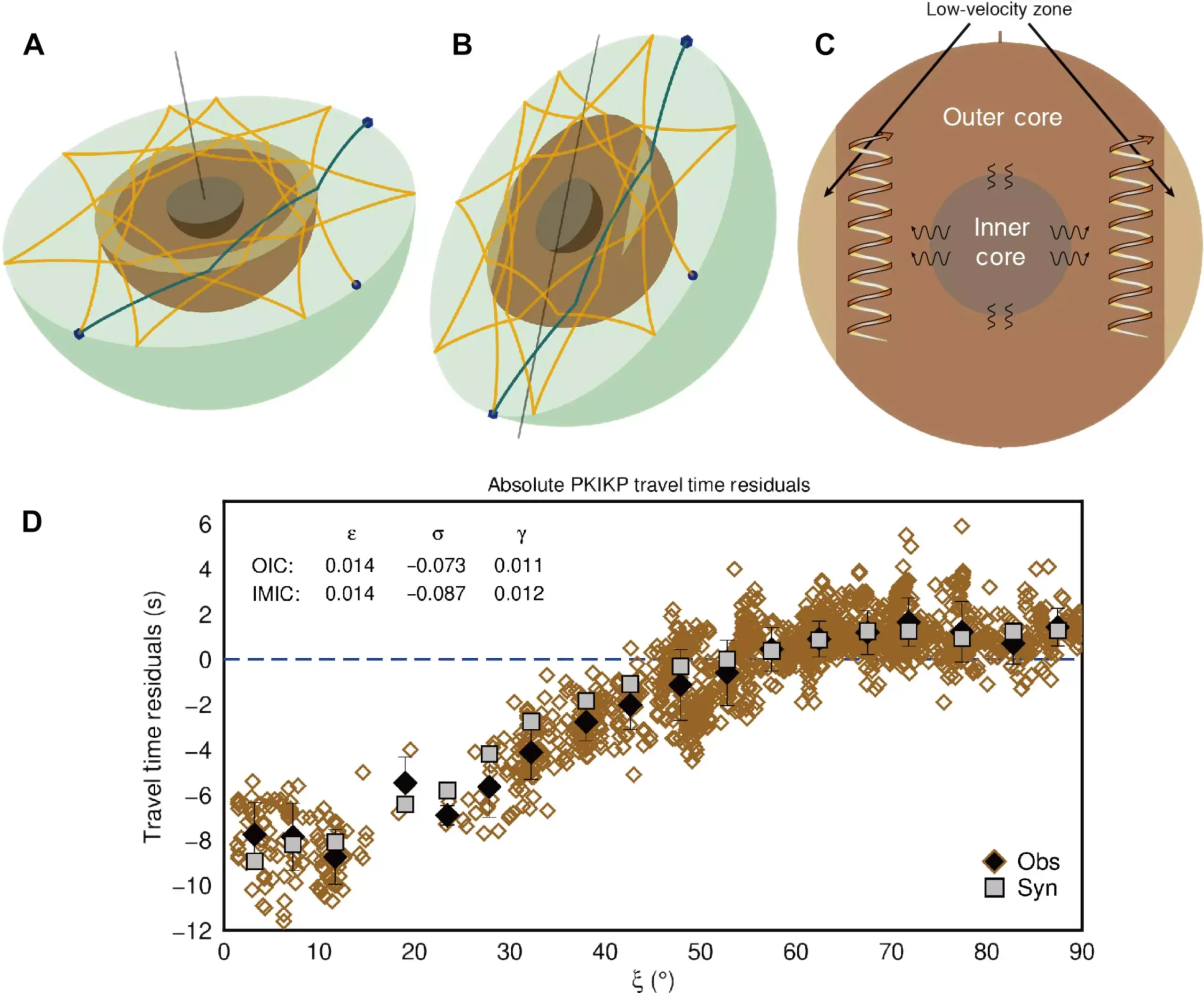Recent research conducted by scientists from The Australian National University (ANU) has revealed a doughnut-shaped region deep within Earth’s liquid core. This discovery sheds new light on the dynamics of our planet’s magnetic field, offering valuable insights into the complex processes taking place beneath our feet.
The Structure Within Earth’s Liquid Core
The newly discovered doughnut-shaped region is located at the top of Earth’s outer core, where the liquid core meets the mantle. This structure, which had previously gone undetected, is situated at low latitudes and runs parallel to the equator. It is characterized by slower seismic waves compared to the rest of the liquid outer core, suggesting a unique composition and behavior.
Unlike traditional methods that focus on seismic wave signals generated by earthquakes within the first hour, the ANU scientists took a different approach. By analyzing waveforms many hours after the earthquake origin times, they were able to uncover the hidden doughnut-shaped region within Earth’s core. This innovative technique allowed for a more comprehensive understanding of the Earth’s inner workings.
Mysteries of Earth’s Magnetic Field
Dr. Xiaolong Ma, a study co-author, emphasized that the discovery of this region has unlocked some of the mysteries surrounding Earth’s outer core. The outer core, primarily composed of liquid iron and nickel, plays a crucial role in generating Earth’s magnetic field. Understanding the composition and dynamics of the outer core is essential for predicting changes in the magnetic field and its impact on life on Earth.
The presence of a low velocity zone within the liquid core suggests a high concentration of light chemical elements in that region. These elements, combined with temperature differences, contribute to the movement of the liquid in the outer core, influencing the generation of Earth’s magnetic field. This magnetic field is essential for protecting our planet from harmful solar winds and radiation, making it a vital component for sustaining life on Earth.
Looking Towards the Future
The scientists involved in this study believe that further research is needed to unravel the remaining mysteries of Earth’s outer core. A multidisciplinary approach combining seismology, mineral physics, geomagnetism, and geodynamics will be crucial in expanding our knowledge of the Earth’s interior. By delving deeper into the composition and behavior of the outer core, scientists hope to gain a better understanding of the processes that shape our planet and sustain life as we know it.


Leave a Reply